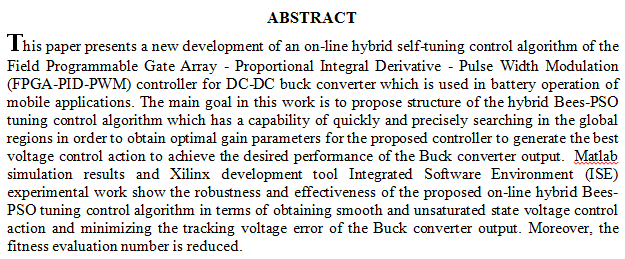
The determination hardness in water raised to rivers caused several problem in the validity of the water used depends on where determination ions concentration calcium and magnesium in salts carbonate and sulfate , this possibility of separation between of these ions and the resulting impact on concentration and determination the degree of hardness water and appreciation between the insolvent water quality . It study the effect of the impact of concentration magnesium ion in determination the quality of the water has turned out to be Mg concentration more than 60% of the total content of hardness is borderline in hardness effect the determination. Adopted in this research determination the ions in two method titration by EDTA solution and
... Show Moreالوصف The synthesis of 2 (N-phenyl dithio carboxamid) benzothiazol Ligand (L) from reaction of 2-Mercaptobenzothiozol with phenylisothiocyanate using ratio 1: 1. The ligand was characterized by elemental analysis (CHN),'H-NMR, IR and UV-Vis. The complexes with bivalent ions (Ni, Cu, Zn, Cd and Hg) have been prepared and characterized. The structural diagnosis was established using IR, UV–Visible spectro photometer, molar conductivity, atomic absorption and molar ratio with selected metal ions (Ni2+, Cu2+). The complexes of (Ni, Cu) gave octahedral structural while the complexes of (Zn, Cd, Hg) gave tetrahedral structural. The study of biological activity of the ligand (L) and its complexes (Ni, Cu, Hg) in two deferent concentration (
... Show MoreThe study involved the effectiveness of Iraqi attapulgite (IQATP) clay as an environmentally friendly material that easily adsorbs brilliant green (BG) dye from water systems and is identified by various complementary methods (e.g., FTIR, SEM‐EDS, XRD, ICP‐OES, pHpzc, and BET), where the result reported that the IQATP specific surface area is 29.15 m2/g. A systematic analysis was selected to evaluate the impact of different effective adsorption performance variables on BG dye decontamination. These variables included IQATP dosage (0.02–0.8 g/L), solution pH (3.05–8.15), contact time (ranging from 2 to 25 min), and initial BG dye concentration from 20 to 80 mg/L. The parameter
... Show More (1)
(1)
 (1)
(1)
In this study, the photodegradation of Congo red dye (CR) in aqueous solution was investigated using Au-Pd/TiO2 as photocatalyst. The concentration of dye, dosage of photocatalyst, amount of H2O2, pH of the medium and temperature were examined to find the optimum values of these parameters. It has been found that 28 ppm was the best dye concentration. The optimum amount of photocatalyst was 0.09 g/75 mL of dye solution when the degradation percent was ~ 96 % after irradiation time of 12 hours, while the best amount of hydrogen peroxide was 7μl/75 mL of dye solution at degradation percent ~97 % after irradiation time of 10 hours, whereas pH 5 was the best value to carry out the reaction at the highest deg
... Show More (18)
(18)
 (13)
(13)
 (16)
(16)
 (8)
(8)
In this work, a weighted H lder function that approximates a Jacobi polynomial which solves the second order singular Sturm-Liouville equation is discussed. This is generally equivalent to the Jacobean translations and the moduli of smoothness. This paper aims to focus on improving methods of approximation and finding the upper and lower estimates for the degree of approximation in weighted H lder spaces by modifying the modulus of continuity and smoothness. Moreover, some properties for the moduli of smoothness with direct and inverse results are considered.
 (5)
(5)
 (1)
(1)
 (32)
(32)
 (7)
(7)
 (34)
(34)
 (28)
(28)
 (13)
(13)
 (7)
(7)
Free vibration behavior was developed under the ratio of critical buckling temperature of laminated composite thin plates with the general elastic boundary condition. The equations of motion were found based on classical laminated plate theory (CLPT) while the solution functions consists of trigonometric function and a continuous function that is added to guarantee the sufficient smoother of the so-named remaining displacement function at the boundaries, in this research, a modified Fourier series were used, a generalized procedure solution was developed using Ritz method combined with the imaginary spring technique. The influences of many design parameters such as angles of layers, aspect ratio, thickness ratio, and ratio of initial in-
... Show More (1)
(1)
